Kilkenny is renown for its hurling success. It is also famous for its Smithwick’s beer brand, which was established in the city in 1710 (older than the Guinness brewery). The Smithwick family had a big influence in Kilkenny, including the formation of the golf club in 1896, when two members of the family were involved in its formation. One of them, James Smithwick, was the club’s first captain.
Kilkenny Golf club celebrates its one hundred and twenty fifth anniversary this year. Only last weekend (10th -12th September), the club hosted a free competition as a ‘Thank You’ to its members for their co-operation during the Covid-19 lockdown, and to celebrate its 125 years in existence.
Since being formed as a nine hole course in 1896 the club moved to three different locations before settling to its current site in 1924 at Newtown, which is just at the edge of Kilkenny city. It became an 18 hole course in 1938. In 1994 an additional twenty five acres adjoining the course was purchased, and a programme of major improvements to the golf course was planned and successfully implemented in the subsequent years, including the introduction of sand based USGA greens to all of the holes, with new tee boxes, and bunkers and a redesign of the course layout. Back in 1896 the club had forty seven members. Today the club has thirteen hundred members.

The club has been at its present location since 1924
The head greenkeeper at Kilkenny is Sean Dowling. Sean was a former county Kilkenny hurler for five seasons and won two All Ireland medals in 2002 and 2003. He finished playing inter county hurling in 2005. Still a young man, at only 43 years of age, it’s hard to believe that he is the longest serving greenstaff member, having started working at the club 24 years ago in 1997. There are five full time staff members, with one extra person taken on in the summer.
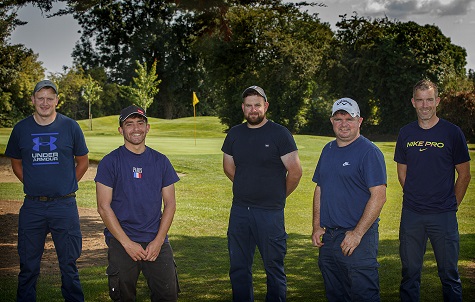
The greenkeeping staff from left: Craig Kennington, Jeff Kealy, Eoin O’Donnell, John Doheny, Sean Dowling. Missing from photo is Robert Dowling
Sean has seen many changes to the course over the years he has been there. He and his staff have made subtle improvements, which has helped bring the course to where it is today. In 2019 the Golfers Guide To Ireland named it the “Best Hidden Gem in Leinster” for 2019. With a brilliantly maintained course and a standing of so many trees it is indeed a hidden gem. The course did have a setback in February 2014 when storm Darwin struck. Around 500 trees succumbed to the hurricane winds, forcing the course to be closed for almost a month.
When I arrived at the maintenance facility to meet up with Sean, I noticed a trailing five-gang mower. “Do you still use this?” I asked. “We sure do”, said Sean. It’s very reliable for mowing the practice area and the rough on the course”.
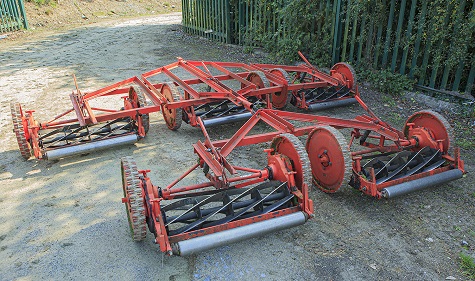
This trailing gang mower earns its keep mowing the practice area
Lockdown projects
We are all too familiar with the stress and inconveniences that COVID-19 brought. With golf clubs closed on at least two occasions throughout the pandemic, Kilkenny Golf Club took this as an opportunity to carry out improvements to the course. One of these projects was the development of the 9-hole juvenile course. This area of land, which had three practice greens, was used by members to practice on. The extra six greens were simply created by gradually mowing down the grass from the rough. The same applied to the new tee boxes. The layout was simply designed where the holes range from 40 to 60 yards long. It is ideal for the junior members to practice on. Even the elderly members find it useful, as some may not be able to endure a full 18-hole round of golf.
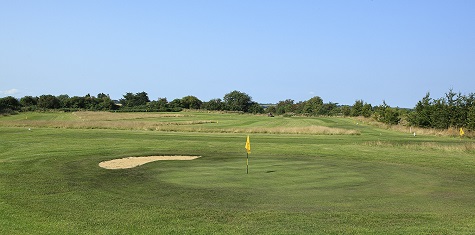
The juvenile course was created during the lockdown
However the most successful of the lockdown projects was the creation of over two acres of wild flora around the course. It was a spectacular display of colour as I went around the course. “You should have seen it three weeks ago when it was a blaze of colour”, said Sean. “I thought of the idea last winter and decided to give it a try and see how it would turn out. I consulted with one of the major wild flower seed suppliers on how to go about doing it. I couldn’t believe how well the seeds established. Throughout this summer the course was in full bloom. It was a talking point for all the members. They were delighted with the result. Seeing the course in full bloom from wild flowers gave everyone a big lift, which we all needed after the past eighteen months of Covid restrictions”.
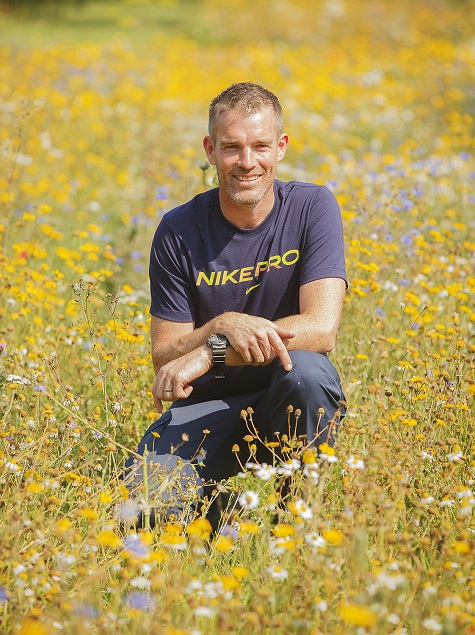
Sean Dowling was more than pleased with the success of the wild flower project
16kg of wild flower seed was used in the different areas to create the display. The project was so successful that Sean has organised a day at the end of this month (September) for the members to come and harvest the wild flower seeds, which will mainly be from the annuals. These will be resown to provide more flowers for next year. The club enforced a new local rule of no walking in the wild flower areas. Should a ball end up in the flowers, a free drop is allowed, using a different ball – no looking for lost balls.
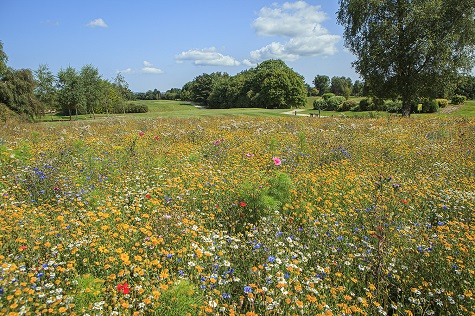
The wild flower project was a great talking point for the members
Maintenance
Hollow coring is carried out on the greens in the spring, during which time the greens are overseeded with Crystal Bluelinks and Shark creeping bentgrass. 30kg of seed is used to overseed the 18 greens and putting green. They are overseeded again at the end of August. After the spring hollow tining, the greens are pencil tined every month and given a light rolling.
Sean does not scarify the greens. Nor does he apply granular fertiliser to them. He hasn’t done this for eight years. Instead he uses a liquid feed every two weeks, with a growth regulator added to the mix. This changes to every four weeks in winter. Every two weeks, during the summer, light sanding is applied to the greens as well.
A preventative programme of fungicides is applied every month. The location of Kilkenny Golf Club makes it one of the coldest places in Ireland in winter and the warmest in summer, making it ideal for disease to occur. Wetting agents are applied during the summer, which changes to penetrants in winter.
The height of cut on the greens is 2.7mm in summer and 4.5mm in winter. Surrounds, tee boxes and approaches are mown at 10.5mm while the fairways are cut at 14.5mm in summer, changing to 19mm in summer. The semi-rough is mown at 35mm and the rough at 50mm.
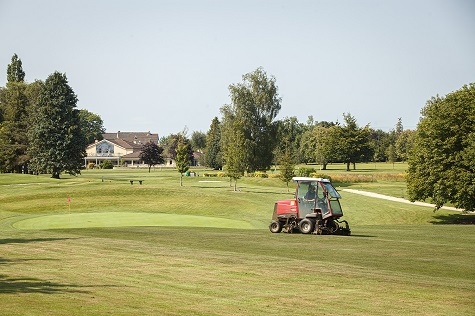
The 13th fairway being mown
All the greens and tee boxes have automatic irrigation. In 2016 a project to upgrade the irrigation system began. This involved replacing the old water pipes and junction boxes with new ones. This upgrade also included the installation of sprinklers on the approaches to 12 of the greens. During the drought of 2018, which was one of the driest summers ever recorded in Ireland, the 6 approaches that had no sprinklers were badly affected by the lack of water. This was remedied in 2020 when those remaining 6 approaches got sprinklers installed. The water used for irrigation is sourced from a well on the course. The water from this well is very reliable. During the above mentioned drought of 2018 the pumps were in constant demand for almost 5 months, often running for up to 16 hours each day, consuming 100,000 litres of water. Despite this demand the water from the well only dropped 12 inches.
“We were very fortunate in having a good water supply and the pumps kept working without breaking down”, said Sean. The strange thing was that as soon as the drought ended, one of the pumps broke down and needed replacing. It would have been disastrous had it happened in the middle of the heatwave.
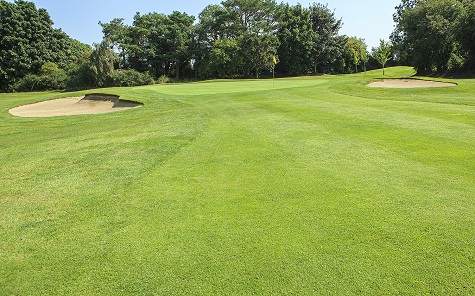
Adding irrigation to the approaches prevented them from drying out during drought periods
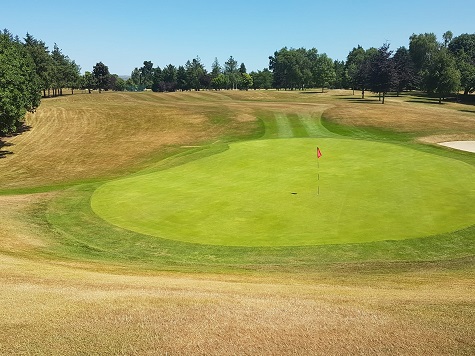
The surrounds of the 13th green suffering during the drought of 2018 before irrigation was installed. Photo Sean Dowling
It was a pleasure going around the course with Sean. Having glorious sunshine and blue skies was an added bonus. Sean and his greenkeeping team had the course in great condition. They have earned the respect from the 1300 members. It is well worth a visit.
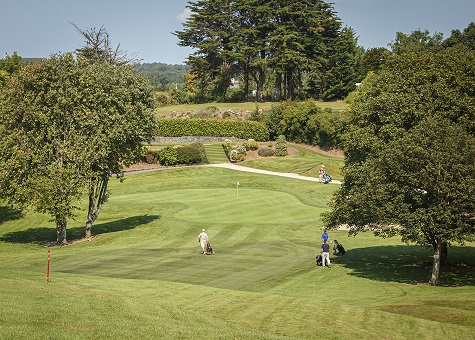
A view of the 1st hole